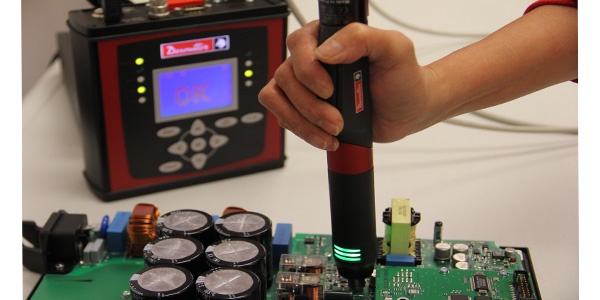Programmable torque drivers are sophisticated tools used in various industries for precision torque applications. While their primary function is to apply a specific amount of torque to fasteners, they also boast advanced features that enhance efficiency, accuracy, and versatility. In this guide, we'll explore some of the advanced features available in programmable torque drivers and how they can benefit your assembly processes.
Digital Display and Controls:
One of the most notable features of programmable torque drivers is their digital display and controls. Unlike traditional torque wrenches, which rely on mechanical scales or indicators, programmable torque drivers feature a digital interface that allows users to set and adjust torque settings with precision. The digital display provides real-time feedback on torque levels, enabling operators to monitor torque output and adjust as needed for optimal results.
Multiple Torque Settings:
Many programmable torque drivers offer multiple torque settings, allowing users to store and recall preset torque values for different fastening applications. This feature is particularly useful in assembly environments where various torque specifications are required for different components or assemblies. Users can easily switch between torque settings without the need for manual adjustments, saving time and minimizing errors.
Programmable Memory:
Some advanced programmable torque drivers feature programmable memory functions that allow users to save and recall custom torque profiles. This feature is invaluable in applications where precise torque control is critical, such as aerospace, automotive, and electronics manufacturing. Users can program specific torque values, sequence steps, and torque tolerances for different assembly tasks, ensuring consistency and accuracy across production lines.
Torque Verification and Data Logging:
Torque verification and data logging capabilities are essential features in programmable torque drivers for quality control and traceability purposes. These tools allow users to verify torque output against predetermined tolerances and log torque data for documentation and analysis. This feature is particularly beneficial in industries with stringent quality standards and regulatory requirements, such as medical device manufacturing and aerospace engineering.
Error Detection and Feedback:
Many programmable torque drivers are equipped with error detection and feedback systems that alert users to potential issues during the fastening process. These systems may include audible and visual alarms, haptic feedback, or on-screen notifications that indicate over-torque or under-torque conditions, cross-threading, or fastener jams. By providing real-time feedback, these advanced features help operators identify and resolve issues promptly, minimizing rework and ensuring product quality.
Torque Control Modes:
Programmable torque drivers often offer multiple torque control modes to accommodate different fastening requirements and assembly techniques. Common torque control modes include peak torque, track torque, and yield control, each suited to specific applications and materials. Peak torque mode ensures that the desired torque value is reached and maintained, while track torque mode allows for continuous torque monitoring during fastening. Yield control mode applies torque until a predetermined yield point is reached, ideal for applications requiring precise torque control and fastener tensioning.
Wireless Connectivity and Integration:
Some advanced programmable torque drivers feature wireless connectivity options and integration capabilities that allow them to communicate with other devices and systems. These tools can be connected to smartphones, tablets, or computers via Bluetooth or Wi-Fi, enabling remote monitoring, control, and data transfer. Integration with manufacturing execution systems (MES) or supervisory control and data acquisition (SCADA) systems allows for seamless integration into automated assembly lines and real-time data analysis.
Customization and Firmware Updates:
Many programmable torque drivers offer customization options and firmware updates that allow users to tailor the tool's functionality to their specific requirements. Users can customize torque settings, control parameters, user interfaces, and other settings to optimize performance for their unique applications. Firmware updates provide access to new features, performance enhancements, and bug fixes, ensuring that the torque driver remains up-to-date and compatible with evolving industry standards.
Advanced Torque-Sensing Technology:
Advanced programmable torque drivers often incorporate cutting-edge torque sensing technology that provides precise and reliable torque measurement. These tools may utilize strain gauge sensors, digital transducers, or rotary encoders to accurately detect torque levels and ensure consistent fastening performance. Advanced torque sensing technology minimizes the risk of over-torque or under-torque conditions, improving product quality and reliability.
Final Thoughts:
Don't settle for a one-trick pony! Programmable torque drivers are the ultimate upgrade for your assembly line. Forget fiddling with dials – digital displays and a library of torque settings put you in complete control. Need to remember specific values? No sweat – programmable memory stores them all. Plus, built-in verification lets you double-check every turn. By harnessing these features, you'll tighten things up in no time, boost product quality, and keep your operation running smoothly in this high-speed manufacturing world.


No comments yet